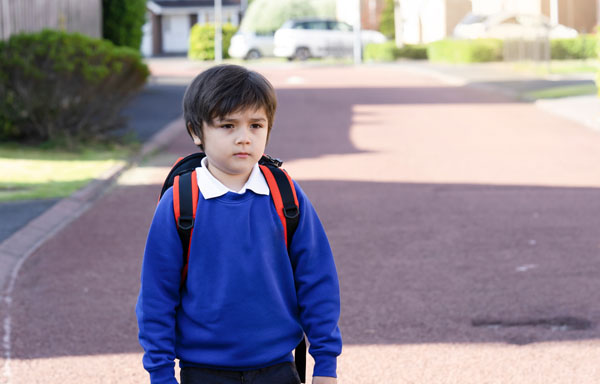DLD and me: supporting children and young people with developmental language disorder

DLD and labels in education
Developmental language disorder (DLD) is a lifelong condition that should be on the radar of all educators. Affecting two children in every class of thirty (a proportion that climbs in disadvantaged areas), DLD describes persistent difficulties with comprehending and/or using language. As awareness and understanding of DLD grows, parents and professionals are increasingly facing the question of how to broach a discussion about DLD with the students themselves.
Ongoing debate around the merits and dangers of applying medical-sounding labels to children has raised valid questions. Treating people differently can lead to stigmatisation but ignoring differences can be insensitive to their distinct experiences and risks further disadvantaging them. In our experience, students with DLD often have an acute awareness that they are ‘different’ in some way, but without having the tools and vocabulary to be able to understand that difference, they are at risk of low self-esteem and the perception that they are simply less ‘intelligent’ than their peers.
Students need to be equipped to understand their strengths and difficulties, particularly as they transition out of the sheltered primary school environment. It is important that this is done sensitively and holistically, however, so that students see DLD not as their defining quality, but as part of their unique selves.
DLD And me
DLD And Me: Supporting children and young people with developmental language disorder (www.dldandme.co.uk) is a published resource book that supports professionals and parents with this process. It is based on the principles of self-advocacy, and on evidence that shows understanding difference and disability can empower young people. Through guided discussions, worksheets and home activities, students are supported to understand what their unique qualities are, how language works, what DLD is, and how they can ensure their needs are met.
The programme comprises twelve session plans, with accompanying visual resources and activities for follow-up sessions. It is appropriate for children in Key Stages 2-4 (though maturity is more important than age), and can be delivered by SLTs, parents or teaching staff with a good knowledge of DLD. Families are included throughout, with a parent leaflet and workshop template available to download, and students are encouraged to share what they have learned with their teachers and the important people in their lives. Examples of projects students have created include a class presentation, a school display, and a film about DLD. As a result of engaging in DLD And Me, we have seen students grow in confidence and take more active roles within their own education, contributing to their annual reviews and speaking up when they haven’t understood something.
Parents as partners
Whether or not a student is ready to learn about their own DLD, a successful school-parent partnership is vital to children with DLD achieving their potential. Parents/carers are likely to know how their child learns and communicates best, and what systems might need adapting. They might also see the consequences of frustration and distress that children with DLD often mask at school and can let you know if this is the case.
Here are some top tips for a fruitful partnership:
- Schedule an initial meeting and come with a blank sheet of paper and an open mind. Start by asking ‘tell me about your child’- then build from there. Find out what helps the student best, particularly around communication difficulty, and plan together how to adapt teaching to accommodate their differences.
- If you and the parent(s) feel it is appropriate, include the child in this discussion. Approaches such as ‘Talking Mats’ can be invaluable in this respect, helping students to clearly express what works for them and what doesn’t.
- Follow this up with regular check-ins. Setting up a home-school book can be very helpful; both sides can use it to celebrate achievements, raise concerns, highlight issues, problem-solve challenges together, record key vocabulary the child is learning, and note down what activities the child has been doing so they can talk about this and be understood. Make sure the positives in the book outweigh the negatives.
- Once the student is approaching the end of primary school, ask parents how much they have spoken to their child about DLD, and whether they would like any support in doing this. DLD And Me can be a helpful way of structuring these discussions.
- Finally, even though the DLD label can be a useful shorthand, never let it overshadow seeing the child as an individual. One parent, reflecting on what had made for a successful partnership with school, commented that “The thing our educators did well, despite having never heard of DLD, was they sought to understand. They didn’t pathologise him, they didn’t question his intelligence, they accepted him exactly as he was and worked to get an understanding of how he learned, and then adapted what they did to suit him.”
While labels must always be used carefully, to empower rather than reduce an individual, we feel that teaching students about DLD can have transformative effects. It can reduce any unarticulated sense of shame or self-blame, while simultaneously restoring the student’s sense of agency for bringing about change. Teachers are central to this endeavour, and we encourage any interested educators to seek out further information on supporting students with DLD.
Anna Sowerbutts and Amanda Finer, Speech and Language Therapists
@pinchof_SaLT
@AmandaFiner
With thanks to Aileen Burnett for her thoughtful input on creating a successful school-parent partnership.